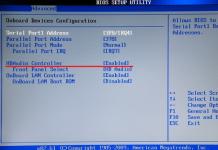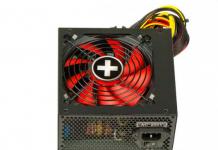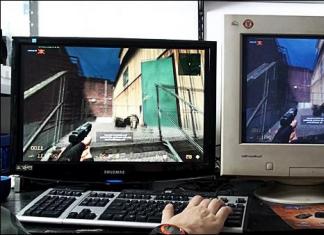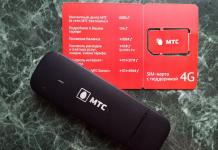The prerequisite for the stable and long-lasting work of a personal computer is the need to carefully select all components during the assembly. This will not only reduce the amount of possible failures, but also keeps the components from failure. So, anyone must have a distinct idea of \u200b\u200bhow to choose the processor to the motherboard.
Method of installation
The central processor is the usual chip with a high degree of integration of electronic components. To turn on it uses a plurality of thin legs contacts. Previously, all manufacturers adhered to one standard, according to which the above-mentioned legs were part of the chip (soldered at one of the stages of production). Such a constructive solution is called PGA. The processor was inserted with legs into a special socket connector on the motherboard and mechanically fixed there. However, afterwards, Intel began to apply another approach in which the pin set was located in the connector, and the processor instead of the legs at the appropriate points were placed contact pads. This made it possible to reduce the cost of production. This solution is called LGA. In both cases, the connectors are designed for a certain amount of the legs of the chip.

So, to choose the processor to the motherboard, you need to decide on the existing type of socket. There are three ways: by direct inspection of the board and search for the name of the socket; using the manual to the motherboard, where the type is specified; Taking advantage of the data from the manufacturer's website. Suppose the board is intended for processors with in this case the Core i3, i5, i7 from Intel company will suit it for it.
Load
The microprocessor, being an electronic product, consumes certain power during operation. In the framework of one model range with increasing frequency, energy consumption increases. That is, wanting to choose a processor to the motherboard, you need to, again, open the instructions for it and find an indication of which permissible frequency can be at the microprocessor. Obviously, if the support of the solution with 2 GHz is declared, the model of the microcircuit with 3 GHz is not recommended in the connector, since the power system may fail by capturing with me and other components. This is usually indicated in the "Supported Processors" section.
Cooling system
Perhaps the answer to the question of how to choose a processor to the motherboard, specialists from computer firms are best known. Most often, it is they who perform a block assembly and face all the nuances. So, deciding with the processor and reading his characteristics, you need to examine the motherboard.

There have been cases when buyers wanted a powerful chip on a frankly budget model. Although the motherboard manufacturer specified the support of the selected processor, an attempt to install the appropriate cooling system on the board (not basic, and efficient) did not end with anything good. Thus, a large radiator could overlap PCI-Express's neighbor connectors, the subsequent maintenance was significantly complicated, etc. Thus, a person learning how to choose a processor to the motherboard, it can be recommended to pre-compare the dimensions of the desired cooling system with the size of the motherboard.
Memory
All modern microprocessors contain an RAM controller in their composition. This allows you to achieve a significant increase in the data exchange rate, eliminates the compatibility problem, simplifies the wiring of the board.

However, you can still meet the decisions of previous generations, in which the memory module management chip is a separate chip located on the motherboard. Very often, such fees allow you to install RAM strips of any of two types (for example, DDR2 and DDR3), these are transitional models. After choosing how to choose a processor to a motherboard, and faced with similar solutions, you need to take into account that the board permits only one with one if the microprocessor is designed to work with DDR3, then it is necessary to install them.
Feature
What is interesting, choose the motherboard under the processor as important as to choose a central chip for a specific motherboard that we will further and show. Selecting components, it is important to comply with the principle of parity, according to which the price categories and fees must be appropriate.

That is, by setting a productive microprocessor into a cheap motherboard, the owner will limit the ability of the system. For example, a system unit based on budget cards ASRock 960GM-VGS3 FX for 2500 rubles. It should not be collected from the FX-9370 for 15 thousand rubles, as in this case only basic functions will be implemented, and bonuses in the form of a mechanism for connecting multiple video cards, a more speed version of SATA, volume and memory frequency, etc. will be without support.
As an example, consider how to choose a processor to Crosshair V Formula-Z. This is a top decision, the cost of which is about 14 thousand rubles. Such a motherboard can work with all processors with in the specification to it states that it supports the memory of DDR3 -2400 MHz; SATA 6GB / S; SLI / CrossFire X mode.

To fully disclose the inclined potential, a processor is required that can work with 2133 MHz memory and calculated to install in Socket AM3 +. Since the board of the upper price category, the microprocessor is recommended with a third-level cache and high frequency of work. In this case, the principle of compatibility is performed from top to bottom, that is, the fee will be able to work with the entire range of AMD products with an appropriate socket (even if the controller supports 1333 MHz memory). You can choose a motherboard under the processor with ideas for the future: to purchase a good motherboard and budget CPU, which is subsequently planned to be replaced by a more advanced solution.
Video adapter
It is equally important to understand how to choose a processor to a motherboard and a video card. Having a discrete video language in his hands, the owner wonders about the wise investment in the purchase of a microprocessor. Modern graphic applications, especially "heavy" (games), use the power not only video chip, but also a central silicon brain. The inconsistency of the performance of one component to the other will result in the fact that one of them will be part of the time to idle, waiting for the completion of data processing by its "colleague".
The correct solution of this problem is reduced to the study of the test results of various processors with an existing video card. This data is a lot on the network. Studying graphics, it can be seen that with each faster processor the outcome value in test holders increases. At some stage, growth becomes insignificant. The processor in which it happened is just optimal for this motherboard and video card.
How to choose a processor to a motherboard on a laptop
Sometimes portable computer owners are asked to the problem of improving the performance of their computing systems. This task is solved by replacing the processor. It is necessary to determine the type of socket that supports the board and select a replacement. In addition, the reference frequency of old and new processors should be the same. It is also desirable that TDP also matches (or was less). That is, instead of Pentium M 730 (1.6 GHz), you can put Pentium M 780 (2.26 GHz).





























